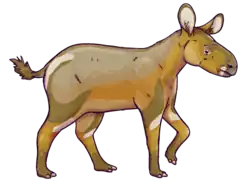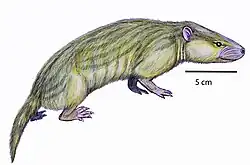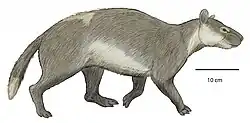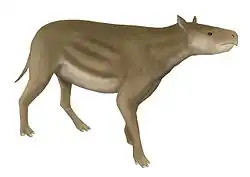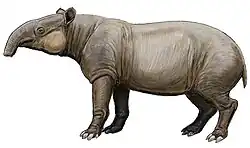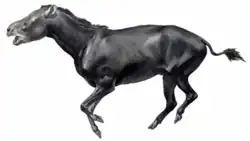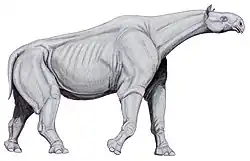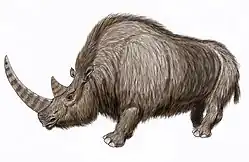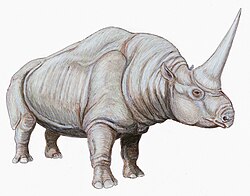Palaeosyops
| Palaeosyops Temporal range:
| |
|---|---|
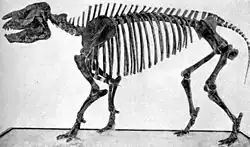
| |
| P. robustus skeleton | |
| Scientific classification | |
| Kingdom: | Animalia |
| Phylum: | Chordata |
| Class: | Mammalia |
| Order: | Perissodactyla |
| Family: | †Brontotheriidae |
| Genus: | † |
| Species | |
| |
Palaeosyops (Greek: "old" (paleos), "boar" (kapros), "face" (ops)[1]) is a genus of small brontothere which lived during the early to middle Eocene.[2]
Biology and size
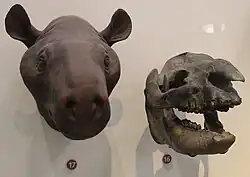
It was about the size of small cattle, with a weight of 600–800 kg depending on the species.[3]
These animals are commonly found in Wyoming fossil beds primarily as fossilized teeth. P. major was the largest species, reaching the size of a small cow. Its describer, Joseph Leidy, erroneously thought that Palaeosyops consumed both plants and animals after examining the fang-like canines. However, it is now known that all brontotheres were strict herbivores, and that many, if not most genera of hornless brontotheres had fang-like canines, possibly for both defense from predators, and intraspecific competition.
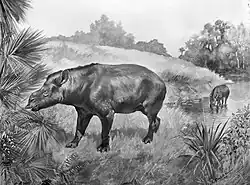
References
- ^ "Glossary. American Museum of Natural History". Archived from the original on 20 November 2021.
- ^ "Fossilworks: Palaeosyops".
- ^ "Paleobiology Database: Palaeosyops robustus". Archived from the original on 2012-12-10. Retrieved 2012-06-03.
